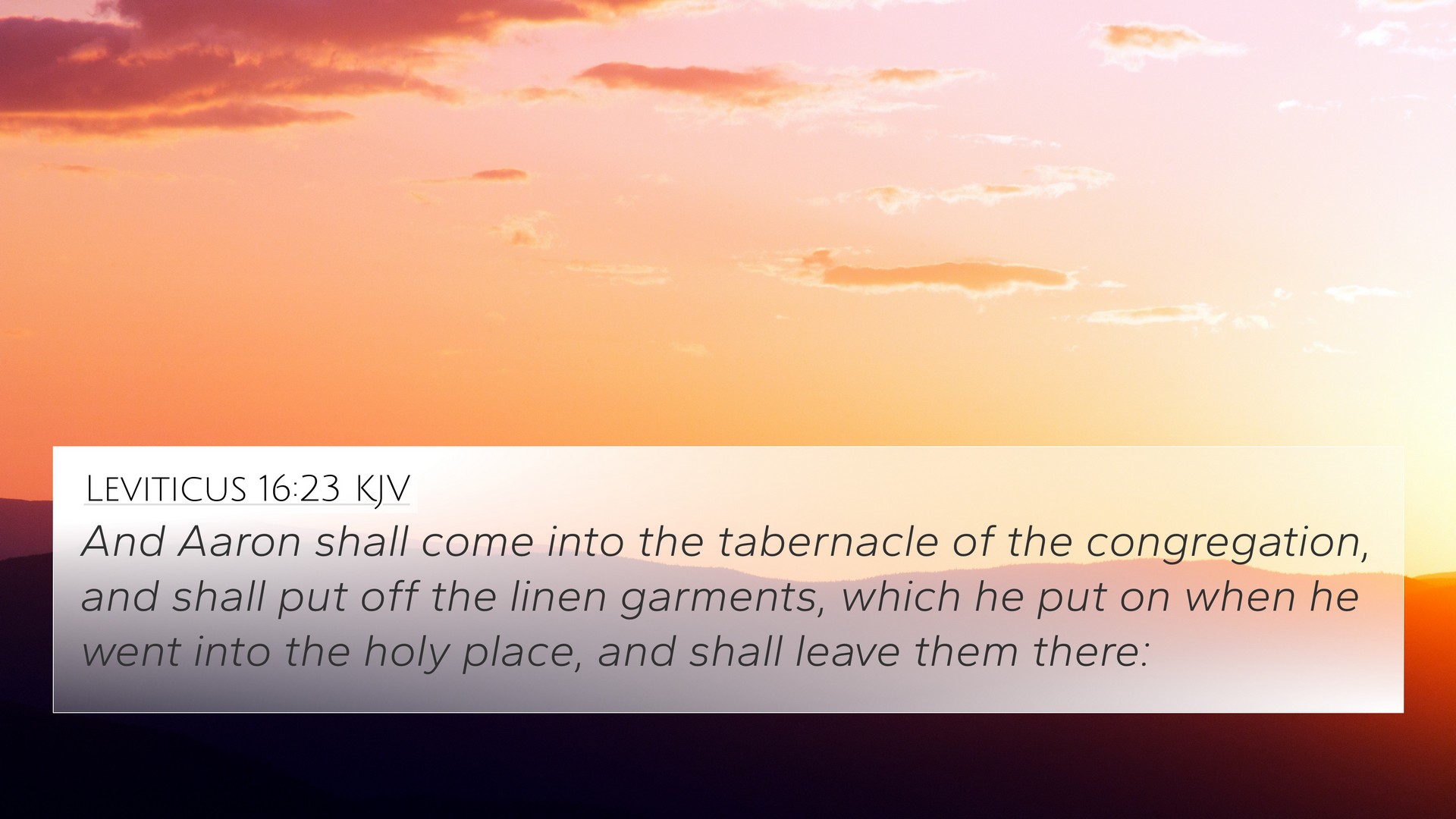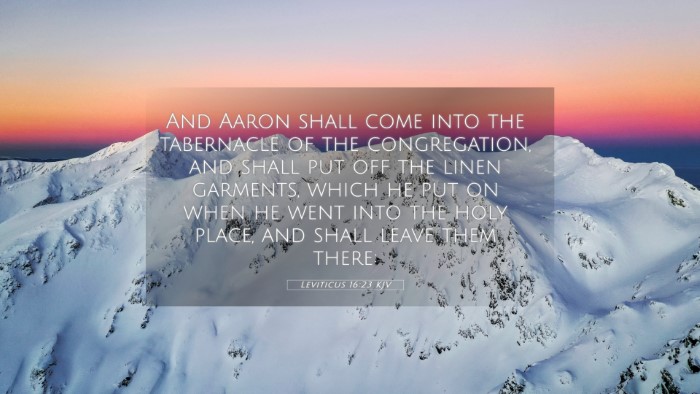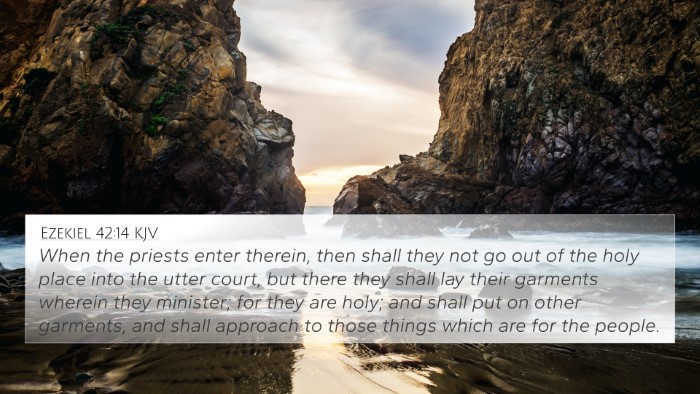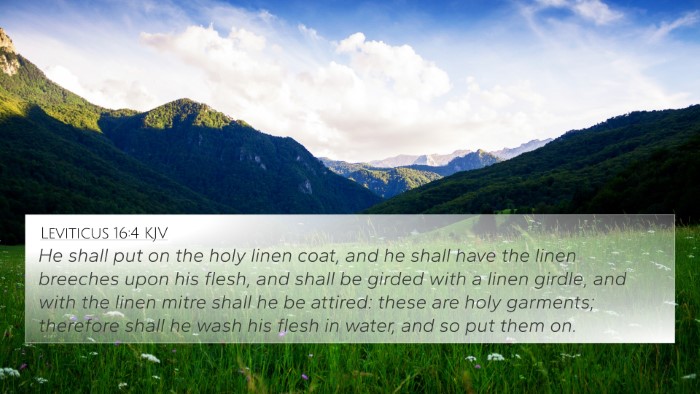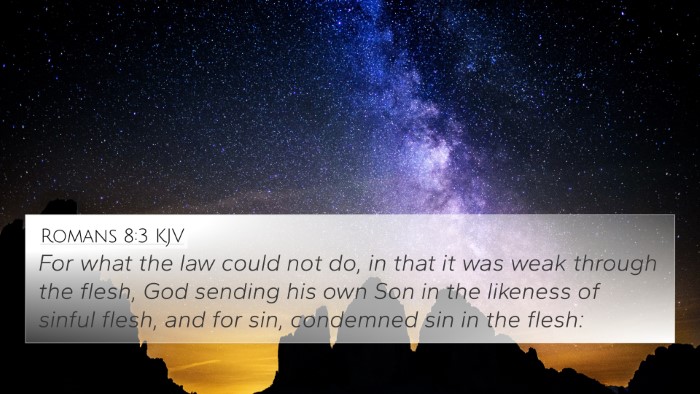Understanding Leviticus 16:23
Verse: Leviticus 16:23 - "And Aaron shall come into the tabernacle of the congregation, and shall put off the linen garments, which he put on when he went in to the holy place, and shall leave them there."
Verse Meaning and Interpretation
This verse describes a significant ceremonial act performed by Aaron, the high priest, as part of the Day of Atonement ritual. The act of removing his linen garments symbolizes the completion of the sacred duties he has just carried out in the holy place. Each aspect of this ceremony holds deep theological implications.
The Symbolism of Linen Garments
Linen garments were worn by the priest during sacred duties due to their purity and simplicity, which reflects the holiness required when approaching God. Matthew Henry notes that they signify the righteousness of Christ, which believers are clothed in, highlighting that our standing before God is not dependent on our merits but on Christ's sacrifice.
Significance of the Tabernacle
The tabernacle itself represents the dwelling place of God among His people. In this verse, the act of entering and leaving the holy place emphasizes the need for holiness and the separation between the common and the sacred, as described by Adam Clarke. Clarke further elaborates that this transition showcases the importance of preparing oneself for the holy moments in God's presence.
The Day of Atonement Context
In the context of The Day of Atonement (Yom Kippur), this verse is pivotal as it highlights the necessary steps Aaron must take to atone for the sins of Israel. Albert Barnes explains that this act is a foreshadowing of Christ's ultimate sacrifice, where He would put away sin once and for all, paralleling Aaron's temporary role as a mediator.
Cross-References and Thematic Connections
Leviticus 16:23 connects deeply with several other Scripture passages, enriching the understanding of atonement, priestly duties, and God's holiness:
- Hebrews 4:14-16 - Jesus as our High Priest who entered the true Holy of Holies.
- Exodus 28:42-43 - Instructions for the priest's garments highlighting holiness.
- Leviticus 10:6-7 - The importance of maintaining the sanctity of priestly duty.
- Numbers 20:26 - Consecration processes that echo the themes in Leviticus.
- Hebrews 9:7-8 - Discussion of the earthly sanctuary and the higher significance of Christ's atonement.
- Romans 8:1 - Assurance of no condemnation through Christ, linking to the atonement theme.
- 1 Peter 2:9 - Calling of believers to be a royal priesthood.
Inter-Biblical Dialogue
The insights gained from Leviticus 16:23 facilitate inter-Biblical dialogue with the New Testament. The roles and rituals of the Old Testament priesthood are crucial for understanding the New Covenant established by Christ. This dialogue is essential for comparative Bible verse analysis.
Tools for Bible Cross-Referencing
To further explore these connections, utilize tools such as a Bible concordance or a Bible cross-reference guide. These resources aid in cross-referencing Biblical texts, making it easier to identify thematic connections between different scriptures.
Practical Applications
For those studying the Bible, understanding verses like Leviticus 16:23 through the lens of cross-referencing not only deepens one's comprehension but also enriches personal faith. Knowing how different scriptures relate helps believers grasp the overarching narrative of redemption and God's desire for relationship.
Conclusion
The examination of Leviticus 16:23 reveals its profound implications for both ancient Israel and modern believers. By linking it with New Testament references, one can appreciate the cohesion of the biblical narrative and the continuous theme of God's redemptive work through Christ.
